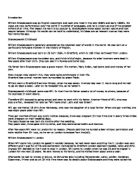The second paragraph opens with “when shepherds pipe on oaten straws,” refers to shepherds in the middle of an oat field, blowing on an oat straw either answering the call to the cuckoo or simply frolicking in the spring harvest. The merry larks are delightful birds which alarm the plowmen when to begin early in the morning just as the sun is rising. The turtles, rooks and daws (simply more birds) walk about displaying a lively and happy nature. The maidens prepare for summer by bleaching their smocks. Living creatures are out everywhere whether they are singing, plowing, walking or cleaning.
The last two sets of lines in each paragraph sing, “The cuckoo then, on every tree, mocks married men, for thus sings he, Cuckoo! Cuckoo, cuckoo! O word of fear, unpleasing to a married ear!” According to old world history, the allusion to the cuckoo on which the word cuckold is based on the nesting habits of certain varieties of this bird. The female of some Old World cuckoos lays their eggs in the nests of other birds, leaving them to be cared for by the resident nesters. This parasitic tendency has given the female bird a figurative reputation for unfaithfulness as well. Hence in earlier English literature the word is used to designate a husband whose wife has wandered off like the female cuckoo. Therefore, not only has Shakespeare created a poem with meter, rhyme, and imagery, he has also added a bit of humor!
“Winter” uses three sets of four lines to separate the poem as well. There does not seem to be an obvious theme, nor is the poem strictly depressing due the inclement weather. Shakespeare is simply commentating on certain aspects of winter during the sixteenth century. In the first line, “icicles hang by the wall” opens the scene as winter is the backdrop. The shepherd, Dick, “blows his nail” is a unique way to explain how Dick cups his hands and blows hot air to keep from freezing. Tom is bringing logs to the house to keep the fire ablaze so all can stay warm. By the time the milk is taken from the barn to the house it too has frozen. “When blood is nipped” is foreshadowing what the roasted crabs will do when Joan is stirring the boiling pot, just barely nipping the skin causing it to bleed.
The second paragraph comments on the colds those have obtained from the winter. The reader gains a feel of how badly these coughs sound because they drown out any sound in the chapel. Outside, the birds are “brooding” in the snow. As oppose to the birds in “Spring”, these birds are not flying about. Rather they are sitting still in one spot to keep warm. Marian’s nose is red and raw from her cold, her coughing, and perhaps blowing her nose. This description reflects the aggravation of having a cold and feeling the pain of rubbing your nose raw. A great use of imagery.
The last set of lines in each paragraph feels the reader with the last sense of imagery, sound. At the end you hear the roasted crabs hissing in the bowl for some type of stew or soup that will soon be ready. In addition, you also hear the song of the nightly owl “’Tu-whit, tu-who!’” a merry note. Inversely, the owl’s note is not merry, it two is cold! Nature is statuesque like the frozen icicles; animals are trying to conserve every bit of heat. Therefore the sound of the owl is somewhat eerie.
Judging from an overall perspective, the two poems are a dichotomy of two worlds, the dying and rebirth of nature. Their opposite attraction is common in literature today and will never grow old. Shakespeare uses interesting methods to bring across the importance of these two seasons.







